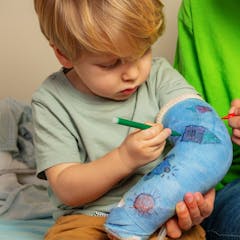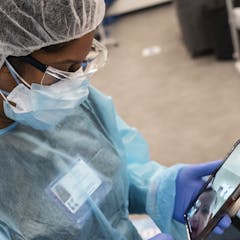
Articles on Hospitals
Displaying 1 - 20 of 267 articles

Amid rising unemployment, inflation and poverty in the 1830s, Philadelphia taxpayers believed welfare scammers were bleeding coffers dry. Poor lists from 1829 show they were wrong.

Medical volunteering can damage important relationships between health professionals and patients.

A virtual ED is typically staffed by emergency doctors, nurses and support staff who can assess patients’ symptoms, provide medical advice, and direct care to the right place.

Surveying more than 5,500 nurses about the realities of their work lives highlights how a shortage of nursing staff could compromise Canadians’ ability to access safe, compassionate care.

This is a structural problem, not something one budget can fix.

Overworking junior doctors has been normalised for decades. And we all suffer.

Has your child fractured a bone? A new report shows it’s the leading type of injury for kids. But the causes of injury change as children grow older and differ between boys and girls.

A new study found that temporary assignments in new places reignited nurses’ passion to help others and helped them rediscover the meaningfulness of their work.

Keeping wounds clean and infection free has challenged people for thousands of years.

Standards are vague, and the IRS, which is tasked with enforcement, hasn’t provided much oversight.

The current triple epidemic of respiratory viruses is affecting all age groups, prompting comparisons with the pre-COVID-19 era.

National Cabinet is meeting today to discuss hospital funding, and the interconnected issues of NDIS reform and GST allocation. But how are hospitals actually funded? And what’s GST got to do with it?

Internal reviews are insufficient to investigate discrimination by hospital administrators and external frameworks are needed to protect employees who face bullying and harassment.

Hospitals have been destroyed, and doctors and health care staff killed. Gaza’s health services may take years to recover, warns a Palestinian health specialist.

When people taking part in 22 pilot programs across the US got free fruits and vegetables, their health improved.

Patients who exercised during a hospital stay had a 10% lower risk of being readmitted to hospital within 30 days of discharge.

Today’s reports of crumbling, dilapidated and dangerous hospital buildings are a far cry from the design ambitions extolled by early NHS architects and planners.

Hospital ethics committees and consultants do not make decisions for others, but their input can help support doctors and patients navigate difficult dilemmas.

While some cyber criminals have previously avoided schools and health-care organisations, it seems these are now fair game.

Candida auris is a relatively new addition to a family of fungi that can infect people. Most of these infections occur in sick, hospitalized patients and can be deadly.
